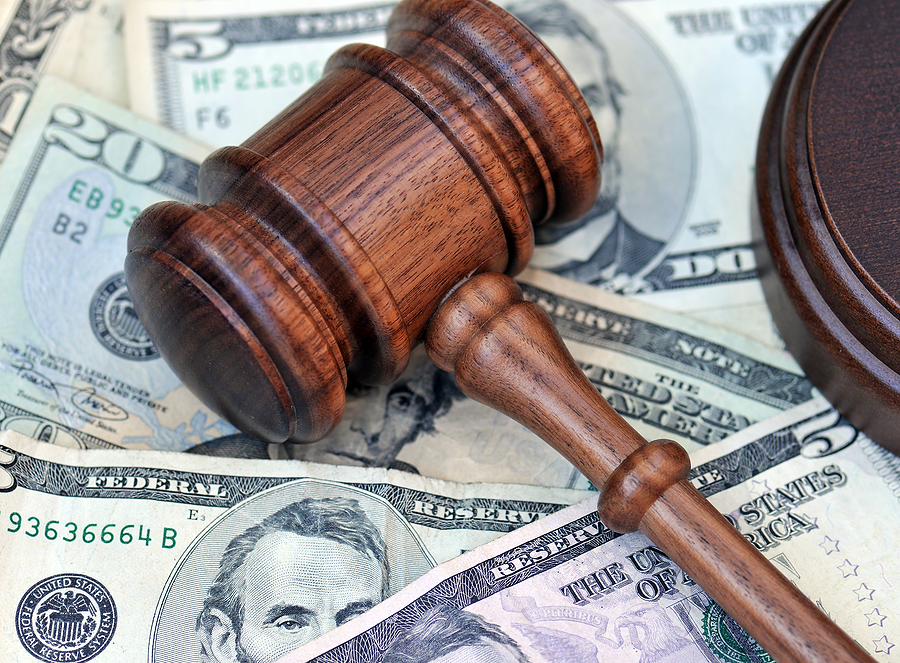In recent years, the insurance industry has been grappling with a growing concern: the surge in what is now termed “nuclear verdicts.” As the name suggests, these are not just ordinary legal outcomes. These verdicts are particularly high jury awards that exceed a “reasonable amount” that judges would normally award based on precedent.
Even in cases where there is no precedent, there is a general understanding of the ballpark in which the settlement value may lie. However, in cases with nuclear verdicts, the settlement values may far surpass expectations. Understanding the root causes and implications of these verdicts is crucial for insurance companies and their clients, as it may save them from exceedingly high levels of liability.
Understanding the Concept of Nuclear Verdicts
A nuclear verdict is officially defined as “a court award or settlement exceeding $10 million.” The concept is relatively new and has become an increasingly prevalent challenge for insurance companies. This is because the prevalence of nuclear verdicts has increased by 27.5% from 2010 to 2019, according to a study by the US Chamber of Commerce Institute for Legal Reform.
As inflationary practices further push consumers to make difficult choices, judges are actively considering nuclear verdicts in cases where insurance companies take advantage of an already choice-stripped consumer base.
The risk of nuclear verdicts is exceptionally high in industries such as:
- Commercial auto,
- Product liability,
- Directors/officers,
- Malpractice insurance, and
- Indemnity or professional liability.
The product liability (23.6 out of 100), auto accidents (22.8 out of 100), and medical liability (20.6 out of 100) industries are at the peak of this risk factor, as in recent years, they have reported a majority of cases where nuclear verdicts were given.
Interestingly, this prevalence isn’t distributed across the United States evenly. Most (63%) of the nuclear verdicts seen in the past decade have been reported in just six states:
- California,
- Florida,
- New York,
- Texas,
- Pennsylvania, and
- Illinois.
Several factors contribute to the rise in nuclear verdicts. The changing societal attitudes toward CSRs, the widespread anti-corporate behavior of the masses, and instances where it has actually been proven that corporations are engaging in unethical practices play a significant role in this prevalence.
The increasing anti-corporate sentiments have been coupled with a perception of unequal wealth distribution – which was particularly highlighted during COVID-19. These issues have influenced juries to side with plaintiffs more often. As a result, it leads to larger and more punitive damages.
In light of the pandemic, some corporations resorted to exploiting inflation, supply chain issues, and staffing shortages. Reports suggest that they have used the pandemic as an excuse for subpar services. This behavior has resulted in a general anger towards corporations. It is reflected in legislative efforts such as the “No Surprises Act” targeting issues in the healthcare insurance industry.
The Reptile Strategy: Fanning the Flames
A coordinated effort by plaintiffs’ lawyers is known as a reptile strategy. It taps into jurors’ elemental fears to generate anger over corporate safety issues. By appealing to jurors’ emotions, this strategy seeks to paint corporations as prioritizing profits over public safety. Stakeholder interest over public interest, as they state it. This approach often leads to inflated or even nuclear damages, as jurors are swayed by emotions rather than legal standards.

The Impact on the Insurance Industry
Nuclear verdicts have a profound impact on insurance companies, extending beyond the financial limitations in court. In many cases, the damages awarded can surpass insurance policy limits. As a result, the insured parties may have to cover the remainder out of pocket.
This is particularly challenging for small- or medium-sized companies with limited financial resources. Furthermore, organizations starting out may be unable to sustain growth as a result. The CAGR of 9.21% of the insurance industry from 2022 to 2030, therefore, mostly reflects the growth of larger, well-established companies.
On top of the financial impact, reputation is also at stake – not just for the insurance company but also for their legal representative. When a client is found guilty and a large sum is awarded to plaintiffs, it is often interpreted as a failure of the insurance company by the public. It is also interpreted as the legal firm’s inability to adequately protect its clients. The law firm may, as a result, be unable to attract new clients.
Managing Nuclear Verdicts
Managing nuclear verdicts requires an adaptable and multi-pronged approach. Firstly, the insurance company can opt for mediation instead of a court settlement. This gives room for the insured to present their woes to identify and mitigate potential risks before the claim.
Litigation and witness preparation are other key element for managing nuclear verdicts. The defense counsel must educate key witnesses on defusing loaded questions, especially those that provoke jurors’ and the public’s fears.
During the course of business, insurers must develop risk models that cater to the eventuality that a larger verdict may be awarded. Early intervention plays a key role here. The defense counsel needs to scrutinize the case from a jury’s fear perspective.
Jury research can help dive into the jurors’ mindset better and understand the risk of a nuclear verdict. The idea is to understand the fear and anger triggers of a juror, which will help develop a strategy to counter the reptile strategy.
Conclusion
To effectively steer clients through the nuclear verdict environment, the best strategy is to stay informed. From past precedents to recent trends, insured individuals, and jury professionals, it is important to understand the driving forces behind the case and its potential for nuclear verdicts.
Proactive measures and a deep understanding are key, not just for surviving in this hard-to-navigate terrain but also to thrive in it.
Topics Liability
Was this article valuable?
Here are more articles you may enjoy.



 7 in 10 Actuaries and Underwriters Worry About Being Replaced by AI
7 in 10 Actuaries and Underwriters Worry About Being Replaced by AI  Report: Over 250,000 US Properties Have Repeated NFIP Claims
Report: Over 250,000 US Properties Have Repeated NFIP Claims  State Farm Posts Worst HO Loss Ratio Since 2011; Peers Recover: S&P
State Farm Posts Worst HO Loss Ratio Since 2011; Peers Recover: S&P  FBI Disrupts Vast Chinese Hacking Operation That Infected Consumer Devices
FBI Disrupts Vast Chinese Hacking Operation That Infected Consumer Devices 

